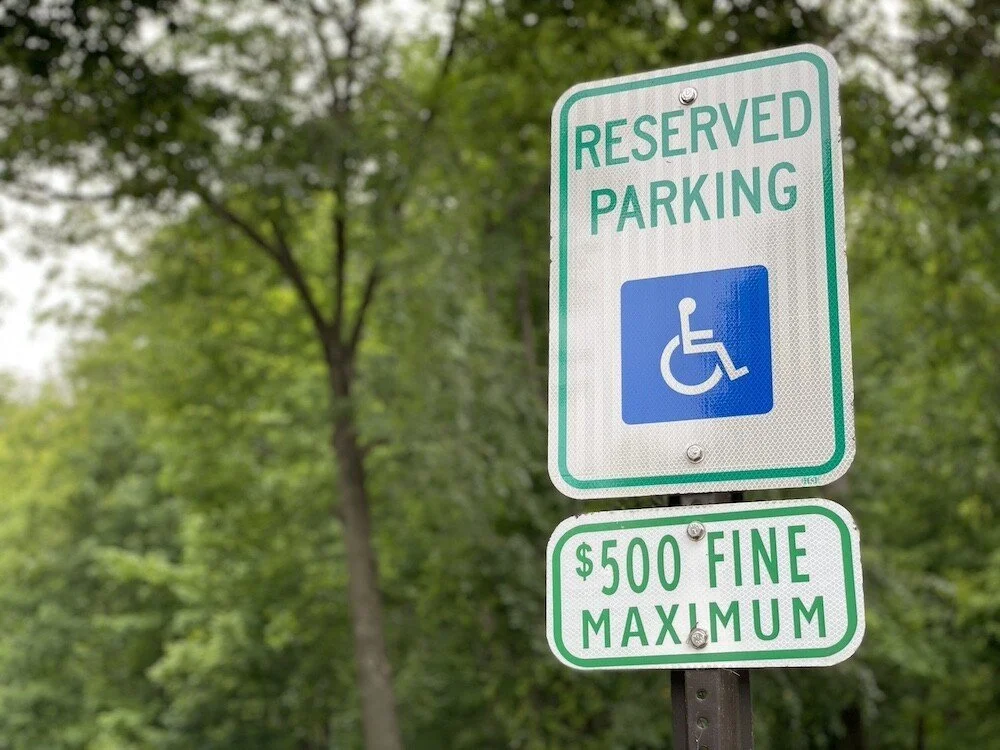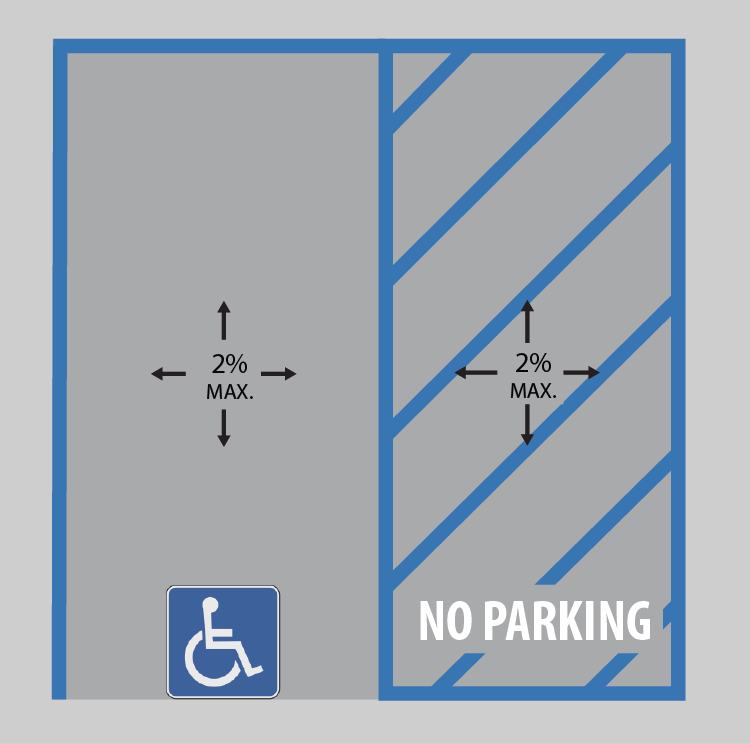ADA Parking Requirements
Accessible parking scope.
By far, the most common reason that a facility is involved with an ADA lawsuit is because of non-compliant accessible parking. Before you call “your buddy that knows the ADA” to stripe your accessible parking, you need to confirm the standard that applies to your facility. In fact, more than one disability access standard may apply to your parking lot. Location and use are the primary factors that determine what to apply. For any public accommodation on the US, at least a portion of any parking provided must be accessible and compliant with the 2010 ADA Standards. If your facility is located in California, then you must comply with both the ADAS and the California Building Code. Since the parking requirements in Chapter 11B of the CBC are more restrictive than the ADAS, any new or altered accessible parking would be built the the minimum requirements of the CBC. Regardless of which parking standard applies, always begin your project by reviewing the scoping section. I know that you may be tempting to skip scoping and go straight to the technical requirements, but trust me that has the potential to be a costly mistake. If you are unfamiliar with the term “scoping”, then check out our blog post about the difference between scoping and technical requirements.
Elements of an accessible parking stall.
The characteristics of any accessible parking stall can be broken down into 4 categories:
Location
Before you even think about buying blue asphalt paint, you must make sure that the access aisle that serves you accessible parking stall is located on an accessible route that connects to all of the accessible entrances and elements on the site. I can’t tell you how many times we have seen a perfect ADA parking stall located in an inaccessible location.
Signage
Every accessible parking stall needs to be identified with a reflective parking sign with an ISA displayed. The minimum requirements between state and federal standards can vary quite a bit. Make sure the correct standard is applied to your facility. It is also a good practice to purchase regulatory signs locally rather than on the internet. A local sign company is more likely to provide you with the correct signage.
Markings
Accessible parking spaces and access aisles have specific dimensional, color and identification requirements. Much like accessible parking signage, the differences between state and federal requirements can differ. Unless you are very familiar with the applicable standards, you would be well advised to hire a licensed professional to mark your parking correctly.
Ground Surfaces
The ground surfaces within the parking spaces and access aisles must be level (2% max) and free of changes in elevation. A ground surface slope of 2% maximum will allow a wheelchair user to safely enter and exit their vehicle without inadvertently rolling away. It also provides enough slope to shed water and prevent puddling. The most common changes in elevation that we find in accessible parking is uplifted concrete/asphalt, significant cracking and truncated domes. Pro-tip: Truncated domes should never be installed within a parking stall or access aisle.
Common ADA Parking Violations.
Missing or Non-Compliant Signage
Incorrect Parking Stall Dimensions
Missing or Non-Compliant Access Aisle
Slope Greater Than 2%
Built Up Curb Ramps Located in the Access Aisle
Truncated Domes Installed Within the Access Aisle
Poor Accessible Parking Dispersion
Parking Not Located on an Accessible Route or The Accessible Route Passes Behind Parked Vehicles
How to improve ADA parking.
The Americans with Disabilities Act has been the law of the land for more than 30 years. If your parking lot does is not already provide accessible parking, then it really should be a priority. Not only will you reduce the risk of being targeted with an ADA lawsuit risk but providing ADA compliant parking may prevent construction project delays because of Path of Travel issues.
The first step to improving disability access for parking is to hire a professional that understands the applicable standards that apply to your particular facility. If you provide parking in California, we recommend contacting one of our experienced Certified Access Specialists. A CASp inspector will provide you with impartial guidance and grant legal benefits that can mitigate exposure to a construction-related accessibility lawsuit.


